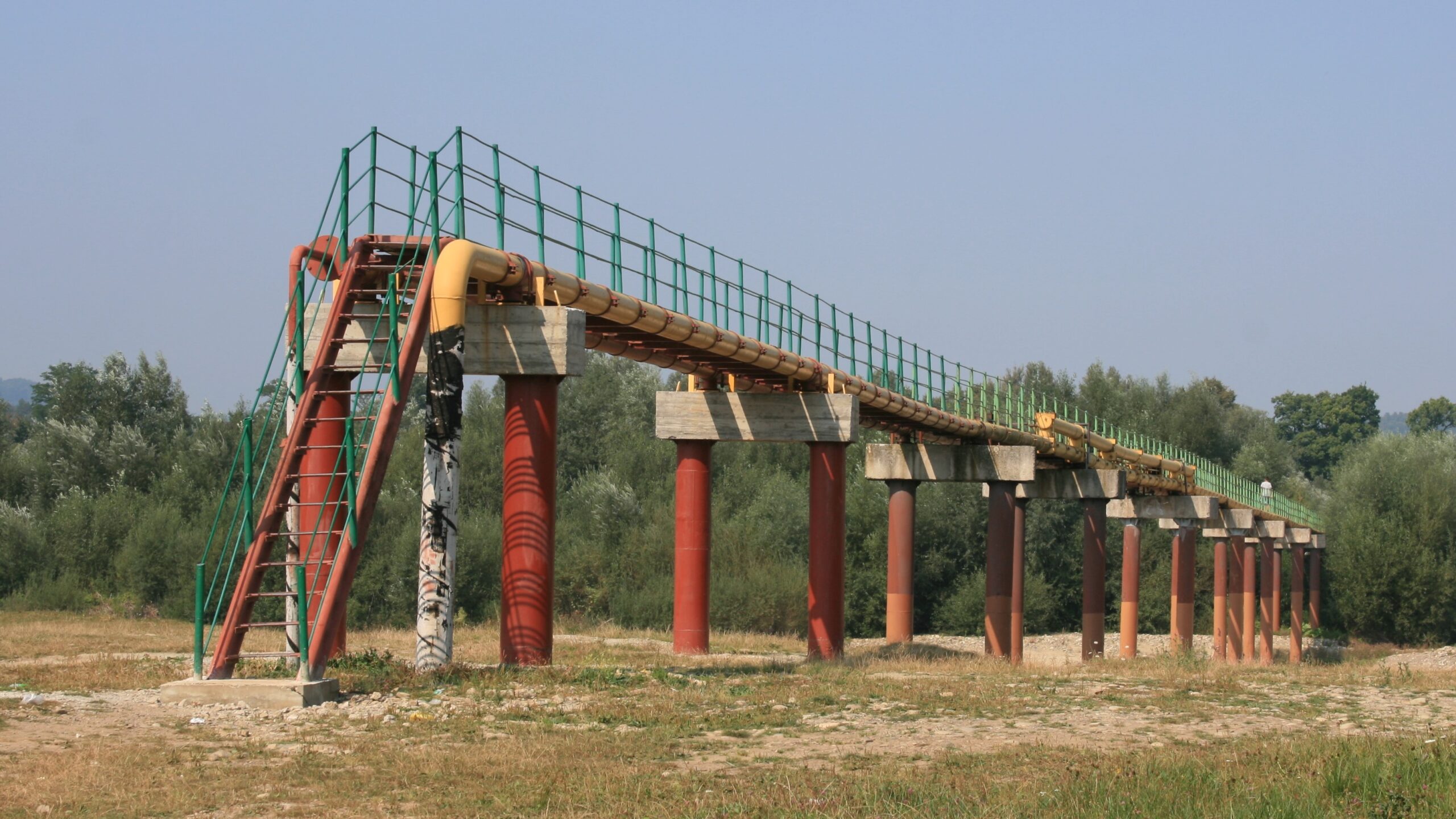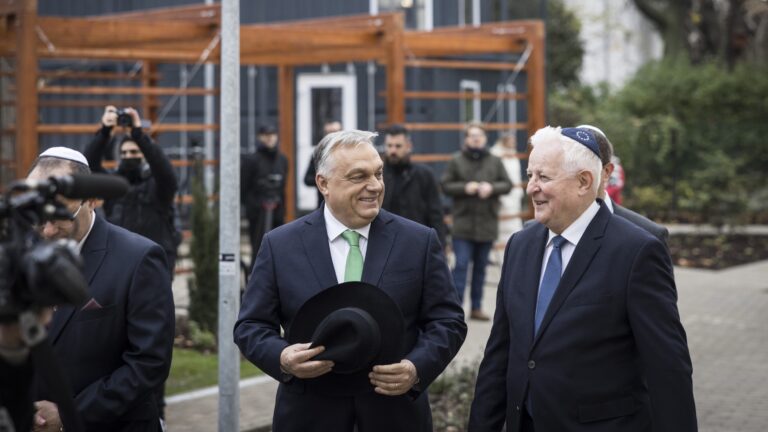The European Commission has outlined a roadmap to end Europe’s reliance on Russian energy, with plans to ban all Russian gas and liquefied natural gas imports to EU member states by the end of 2027. The main aim is to prevent Russia from using energy as a geopolitical tool and to cut off indirect financial support for Russia’s actions.[1]
The roadmap includes measures to
- gas: stop all imports of Russian gas by the end of 2027 by improving the transparency, monitoring and traceability of Russian gas across the EU markets. New contracts with suppliers of Russian gas will be prevented and spot contracts (for immediate payment) will be stopped by the end of 202;
- oil: take fresh action to address Russia’s ‘shadow fleet’ (vessels employed by Russia to evade sanctions) transporting oil;
- nuclear: restrict new supply contracts co-signed by the Euratom Supply Agency for uranium, enriched uranium and other nuclear materials deriving from Russia.
‘The main aim is to prevent Russia from using energy as a geopolitical tool and to cut off indirect financial support for Russia’s actions’
The presented decoupling plan is based on the Versailles Declaration, which was adopted by the leaders of the European Union member states in March 2022. The document states that the Commission intends to present its detailed legislative proposal in June 2025. In 2024 the EU imported 19 per cent of its total natural gas supply from Russia, which amounts to roughly 40 billion cubic metres. Oil is the second largest item, but it lags far behind gas, accounting for only 3 per cent of the EU supply. The European Union wants to introduce greater transparency and monitoring in the area of Russian gas contracts. At the moment, there is no uniform EU framework, so the current information is insufficient. The measure would require companies to inform the competent authorities of the Member States and the Commission about their Russian gas contracts. The Commission intends to present a legislative proposal requiring Member States to draw up a national plan for decoupling from Russian gas. The plans must include:
- Gas import volumes under existing contracts, including contracts with ‘take or pay’ clauses.
- A decoupling roadmap, including milestones supporting EU measures to phase out Russian gas.
- A description of diversification options and technical capabilities, including through existing regional cooperation.
However, it is not only the member states taking action, the European Union itself is also involved, as evidenced by the third point concerning the gradual phase-out of Russian gas import. Although the document mentions a ban, it does not specify how it will be implemented. In this sense, the ban could be interpreted as indirect, ie achieved through economic pressure, but the vague wording does not completely rule out legal action. EU Energy Commissioner Dan Jorgensen at his press conference on 6 May drew attention to the differences between sanctions and trade regulations. This is particularly significant as Hungary (among others) has often exercised its veto right in previous sanction packages, but this would allow the vetoing countries to be bypassed.
The EU document adds that around two-thirds of Russian LNG and pipeline gas imports are based on long-term contracts with EU destination countries. For this reason, the phase-out is planned in two stages, considering the different proportions of short and long-term contracts.
- First, by the end of 2025 any Member State would be banned from signing new Russian gas contracts, and existing spot market agreements would be cut off.
- In the second step, by the end of 2027, quantities arriving under existing long-term contracts would also be made impossible.
Although the EU has not yet released any specific details, based on leaked information and Dan Jorgensen’s press statement, it is planned that the member states concerned could withdraw from the contracts on the grounds of force majeure. Russian gas can only be replaced by integrating other alternative energy sources and other gas sources[2]. The EU is therefore accelerating the deployment of renewable energy sources and energy efficiency throughout the EU. According to EU estimates, this could save more than 15 billion cubic metres of gas per year, reducing the EU’s total gas demand by 40–50 billion cubic metres by 2027. The ban on Russian natural gas is also made possible by the fact that, according to the International Energy Agency (IEA), significant LNG supplies will become available in the coming years. By the end of 2026, 85–90 billion cubic metres of new LNG capacity is expected, mainly from the United States, Canada, Qatar and African countries. By 2030 global LNG export capacity will increase by around 250 billion cubic metres, representing an increase of almost 50 per cent compared to current LNG supply. However, production alone is not sufficient: countries must also have the capacity to receive the gas. In this regard, the EU is well positioned: between 2022 and 2024, a record 12 new LNG terminals are set to be commissioned, boosting the Union’s import capacity by 70 billion cubic metres.
‘By the end of 2027, quantities arriving under existing long-term contracts would also be made impossible’
While Russian oil imports are less significant than natural gas imports, they still represent a notable share of the EU’s energy mix. In line with the proposal to develop national plans for the gradual phase-out of Russian gas, the Commission emphasizes that Member States relying on pipeline oil imports, such as Slovakia and Hungary, should also prepare and closely monitor strategies for phasing out crude oil imports from Russia. According to the draft, Hungary must also develop and submit to the Commission a national plan outlining a strategy for replacing Russian oil imports by the end of 2027. This should include:
- A roadmap for the gradual phasing out of Russian oil, including milestones with appropriate measures;
- As with natural gas, diversification options should be outlined and technical capabilities for replacing Russian oil should be examined;
- Furthermore, the volume of Russian oil imports under existing contracts and the expiry of those contracts should be included.
The EU will support this effort through its existing working and coordination mechanisms, such as the Oil Coordination Group, dedicated sub-groups, and regional platforms. Recognizing that Russian oil reaches Europe not only via pipelines but also through illicit maritime channels, the EU aims to tackle the issue of so-called ‘shadow fleets’—vessels used to evade oil sanctions—through a comprehensive set of interlinked measures. This includes ongoing dialogue with the third countries involved and cooperation with the International Maritime Organization (IMO) to establish stricter global safety and environmental standards. Member States are encouraged to reinforce maritime surveillance efforts and, with the support of the European Maritime Safety Agency (EMSA), to ensure continuous monitoring, enhanced information-sharing, and a visible deterrent presence to counter illegal activities.
Nuclear energy is not immune either. In June, the Commission will also present a proposal to make Russian imports of enriched uranium economically less viable by proposing trade measures on imports of enriched uranium. Russian nuclear fuels will have to be replaced by alternative fuels through the acceleration of contracting and licensing for such fuels and the further development of fully European alternatives. On the other hand, from a date to be determined, the Euratom Supply Agency (ESA), the only body in the EU that can countersign contracts for the supply of fissile materials, will, on a proposal from the Commission, restrict new supply contracts signed with Russian suppliers for uranium, enriched uranium and other nuclear materials. Deliveries under existing contracts will continue, but the organization will not approve their extension or the signing of new supply contracts.
Key Cost Factors for Hungary’s Hydrocarbon Independence
As of 2025, there is no precise public estimate for the total financial cost Hungary would incur to become fully independent from Russian hydrocarbons, but a realistic approximation can be made based on infrastructural, contractual, and market adaptation factors.[3]
- Oil Refinery Reconfiguration: Hungary’s key oil refiner, MOL Group, is heavily reliant on Russian Urals crude via the Druzhba pipeline. Shifting to non-Russian grades would require the technical adaptation of refineries to process lighter or different crude grades. Based on comparable refinery upgrades in Eastern Europe, MOL CEO Zsolt Hernádi estimates the investment needed would be approximately €500–600 million annually for Hungary.
- Gas Diversification Infrastructure: Hungary depends on Russian gas via TurkStream, with limited LNG access and modest regional interconnectivity. Investment in expanding LNG access (eg via Croatia’s Krk terminal) and building new storage or pipeline capacity could require €1–2 billion, especially if Hungary aims for a strategic reserve and long-term security.
- Contractual and Legal Costs: Hungary still honours a long-term gas supply contract with Gazprom. Exiting or modifying these agreements may involve penalty clauses or legal arbitration. Past cases (like Uniper vs Gazprom) resulted in compensation awards of up to €13 billion, though Hungary’s contract size is smaller. A legal disentanglement might cost hundreds of millions.
- Energy Subsidy Rebalancing: Hungary uses Russian energy to support price subsidies. A shift to market-based LNG or non-Russian sources would likely raise costs for consumers. This may require billions in transitional subsidies or social support to cushion households and industry.
- EU Funds and Offsets: Hungary could potentially offset some of these costs through the EU’s REPowerEU funds, green transition subsidies, or joint procurement mechanisms, but such funding is contingent on compliance with broader EU decarbonization and foreign policy goals.
Reducing Natural Gas Consumption in Hungary: Practical Scenarios
To achieve meaningful reductions in natural gas consumption in the coming years, Hungary can pursue several practical and strategic pathways, as outlined in the REKK study analyses from 2023. These include:
- Gas Saving Potential in the Residential Building Sector: Due to increased gas tariffs and a mild winter, Hungarian households reduced gas consumption by 20 per cent in late 2022. Short-term gas savings in buildings could reach 1–1.5 billion m³ annually, with further potential through long-term retrofitting.[4]
- The Potential of Firewood Use to Replace Natural Gas: Firewood is primarily used for heating in single-family homes, particularly those built before 1991. About 37 per cent of households use firewood, with consumption averaging 8.7 m³ per year. A 1°C temperature reduction could save gas but rebound effects may limit long-term savings by 2030.
- Gas Savings Potential in the Electricity Sector: In the short term, gas-fired power plants remain essential for Hungary’s electricity sector, especially for upward reserve provision, with limited reductions in gas consumption. By 2030 gas-fired plants could be phased out from the reserve market, provided there is significant investment in battery storage, renewable energy, and demand-side management. However, as renewable energy capacity grows, the need for reserves increases, making it challenging to fully replace gas. If gas plants remain, those with low ‘must-run’ obligations are the most efficient for gas reduction.
- Electricity Sector: By 2030, if renewable energy sources, batteries, and consumers increase participation in the reserve market, Hungary’s electricity sector could reduce its reliance on gas-fired power plants. In the absence of CCGTs in the energy market, gas consumption could fall from 1.5 bcm in 2021 to near zero. However, if CCGTs are built, gas consumption will depend on international prices, ranging between 0.43 bcm and 0.75 bcm. In a high gas price environment, total consumption could stabilize around 1 bcm.
- District Heating Sector: In the most pessimistic scenario, natural gas consumption in Hungary’s district heating sector could be reduced by 15 per cent, from 1.23 bcm to 1.06 bcm. In other scenarios, reductions range from 29 per cent to 35 per cent. The cost of this reduction is estimated at 320 HUF/GJ, resulting in a 10 per cent increase in district heating prices, assuming the full cost is passed on to consumers.
- Industrial Sector: In Hungary, the largest gas consumer in the industrial sector is the chemical industry, using 0.89 bcm in 2021, followed by the food industry (0.4 bcm), machinery manufacturing (0.26 bcm), and non-metallic mineral products (0.23 bcm). These four sub-sectors account for 77 per cent of industrial gas consumption. According to a December 2022 report by the Hungarian Energy and Public Utility Regulatory Authority (MEKH), industrial gas consumption by non-universal service users dropped by 29 per cent year-on-year by November.
‘Hungary’s transition away from Russian hydrocarbons will incur substantial costs, representing a significant financial burden on the state budget’
Overall Gas Savings Potential
In the short term, gas savings could reach up to 2.5 billion m³ by 2023, mainly driven by residential building sector conservation measures. By 2030 savings could reach 3.9 billion m³ annually, driven not by household restraint but by long-term energy efficiency investments and fuel switching in the district heating and electricity sectors. The industrial sector is the only one expected to increase demand in the long run, as recent short-term reductions were due more to production cuts driven by high prices than to improvements in efficiency or technological shifts.
Hungary’s transition away from Russian hydrocarbons will incur substantial costs, representing a significant financial burden on the state budget and other stakeholders. Rough estimates indicate investments in oil refinery reconfigurations between €500 million and €1 billion, and gas diversification infrastructure potentially costing €1–2 billion. Exiting or renegotiating contracts with Gazprom could lead to legal costs in the hundreds of millions, while replacing subsidized Russian energy with non-Russian alternatives will likely require billions in transitional subsidies. Though some costs may be offset by EU funding mechanisms, Hungary’s compliance with EU energy and foreign policy goals will be crucial for accessing such support.
[1] David Ah-Voun, Chi Kong Chyong, and Carmen Li, ‘Europe’s Energy Security: From Russian Dependence to Renewable Reliance’, Energy Policy, Amsterdam: Elsevier, 2024.
[2] James Y Henderson, Outlook for Russia’s Oil and Gas Production and Export, OIES Paper: NG, no. 189, Oxford, The Oxford Institute for Energy Security, 2024.
[3] András S Deák, John Szabo, and Csaba Weiner, ‘Russia’s Gas Weapon in Central and Eastern Europe’, in EU Energy and Climate Policy after COVID-19 and the Invasion of Ukraine, 2024.
[4] Csaba Weiner, ‘Natural Gas in Hungary Before and After Russia’s 2022 Invasion of Ukraine’, in Refugees, Resources, Security, and Beyond: Legal and Broader Impacts of the War in Ukraine on Hungary and Poland, (eds.) Réka Friedery, Csaba Weiner, and Boldizsár Szentgáli-Tóth, Budapest, HUN-REN Centre for Economic and Regional Studies, 2025.
Related articles:







